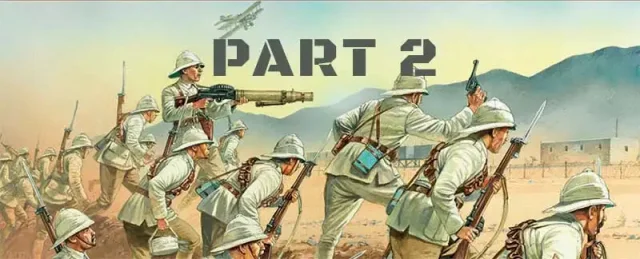- Military History
- Conflicts & Wars
- World War I
- Involved Nations WWI
- Arabia during World War I - The Arab Revolt - Part 1
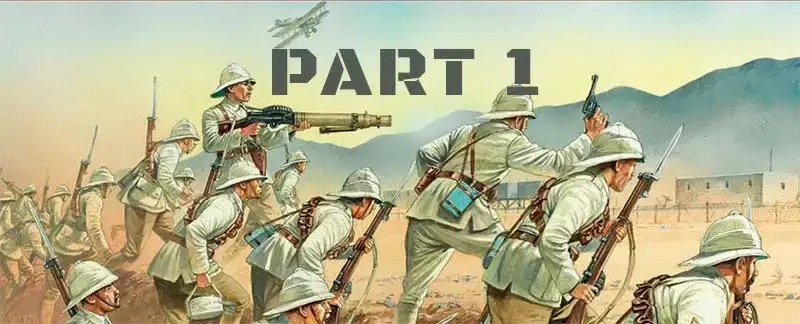
Arabia during World War I - The Arab Revolt - Part 1 Origins of the Campaign, Chronology & Orders of the Battles
On the 10th of June 1916, Sherif Hussein Ibn Ali, Amir of Mecca and Keeper of the Holy Cities of Islam, Mecca and Medina, pushed a rifle through the window of his house in Mecca and opened fire on the barracks of the Turkish garrison. The 62-year-old Hussein was an Arab prince, not a military leader, but by this symbolic act of defiance, he signaled the outbreak of the Arab Revolt against the Turks.
Index of Content (Part 1)
Origins of the Campaign
The Arabian subcontinent covers a vast area. It would be possible to fit all the countries of Western Europe into it and still have plenty of space left over. At the outbreak of World War I in 1914, most Arabia formed part of the Ottoman Empire. The exceptions were the territories included in the British protectorates of Kuwait, Aden and the Hadramawt and Oman coastlines. Today, the Ottoman territories would encompass the modern Arab states of Jordan, Yemen and Saudi Arabia. To the north and the north-east, the Arabian region of the Ottoman Empire was bordered by Palestine, Lebanon, Syria and Mesopotamia (Iraq), which were also part of the empire.
Ottoman power, therefore, stretched from Constantinople (Istanbul) in European Turkey as far as Hudayda in the Yemen. Its citizens included Muslims of both Sunni and Shi’ite traditions, Christians of various traditions and also Jews. While Ottoman rule in Arabia had been merged in the 16th century, by 1914, the relationship with the tribal peoples of this region of the empire was, many times, far from cordial. The total population of Arabia and the territories stretching as far as Syria numbered around six million people, and this included both settled and nomadic Arabs.
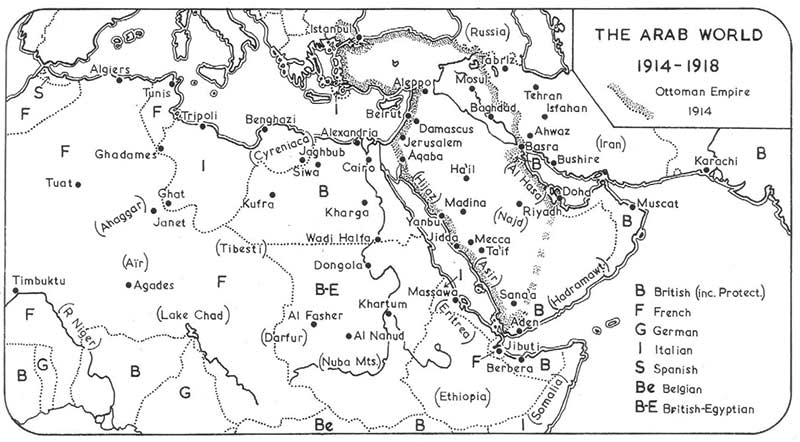
The years immediately preceding the outbreak of the war saw the development of a growing discontent among the population of these regions. The wider population within the Ottoman Empire recognized that the administration had changed following the ‘Young Turks’ revolution of 1908-1909, which had dethroned Sultan Abdülhamit II. While Ottoman sultans continued to rule for another 14 years, actual power was now in the hands of the members of the Committee of Union and Progress. In real terms, political control was exercised by Talat Pasha (Minister of the Interior), Enver Pasha (Minister of War) and Mehmed Cemal Pasha (‘Büyük’ or Djemal Pasha, Minister of the Marine). Relations between the Arab leaders and this new regime were initially cordial, they soon soured as the more tolerant Ottoman approach to the administration of the regions was replaced by a more authoritarian form of government. For many, the Ottoman Islamic Empire had been replaced by a Turkish Empire.
This growing discontent was also set against a backdrop of real military difficulty for the Turkish Government. During the 19th century, the Ottoman Empire had lost control of extensive areas of its territory following a series of military defeats. Egypt, which had formerly been an Ottoman province, was now effectively in British control. The years that immediately followed the founding of the Young Turks government had seen a series of international confrontations. In 1908, Turkey lost Bosnia-Herzegovina to Austria-Hungary. Following a campaign in North Africa in 1911-1912, it lost Libya to Italy and, after the First Balkan War of 1912, it lost control of Macedonia. Before the outbreak of World War I, therefore, the Ottoman or Turkish Empire was on the brink of collapse, an event that had been predicted by many since the mid-19th century.
WWI Through Arab Eyes - An Al Jazeera documentary about the origins of the Arab Revolt during World War I, the events surrounding ‘The Great War’ and its legacy from an Arab perspective.
From an international perspective, the apparent political and military weakness of the Ottoman Empire was doubly worrying as it came at a time of increasing German influence within Turkey. Britain and France found that their links with Turkey, which had once been strong, were being constantly eroded while Germany was openly wooing the new administration. Kaiser Wilhelm II visited Turkey in 1889 and 1898, and these visits coincided with a phase of German interest and investment in the Ottoman Empire. This soon came to be focused on railway projects as Germany supplied the engineers, railway equipment and funding for a series of railways across the Ottoman Empire. The most controversial of these was the Constantinople-Baghdad Railway, which was begun in 1888 but became the subject of international protests from Britain.
In 1892, a new rail link was built to link Constantinople with Ankara. From an Arab perspective, the Hejaz Railway, which was completed between 1900 and 1908, not only facilitated pilgrimages to the holy cities of Mecca and Medina but also merged Ottoman power in the Hejaz. The German influence in these projects was worrying and, in the years, immediately before World War I, this influence focused on overtly military issues. There had been a German military mission in Turkey between 1886 and 1895 and, in December 1913, a new mission was established under the command of General Liman von Sanders. This German mission then facilitated the re-arming and reform of the Ottoman Army, providing instructors for new weaponry and also allowing Ottoman officers to attend German military colleges.
Against this backdrop of international tension, among the peoples of Syria, Mesopotamia, Palestine and Arabia, the forces of nationalism were also at work. This was reflected in the development of several secret societies. In Mesopotamia, the Ahad society was formed, which included many Ottoman army officers of Iraqi birth. The most prominent society in Syria was the al-Fatat society, which was predominantly urban based and included intellectuals, civil servants, and men of the landed class in its numbers. The overlord of Syria, Nuri ash Shalaan, contemplated revolt but was too near the seat of Turkish power to do so effectively. There were a series of crack- downs on these secret societies between 1914 and 1916, which saw several of the leaders executed.
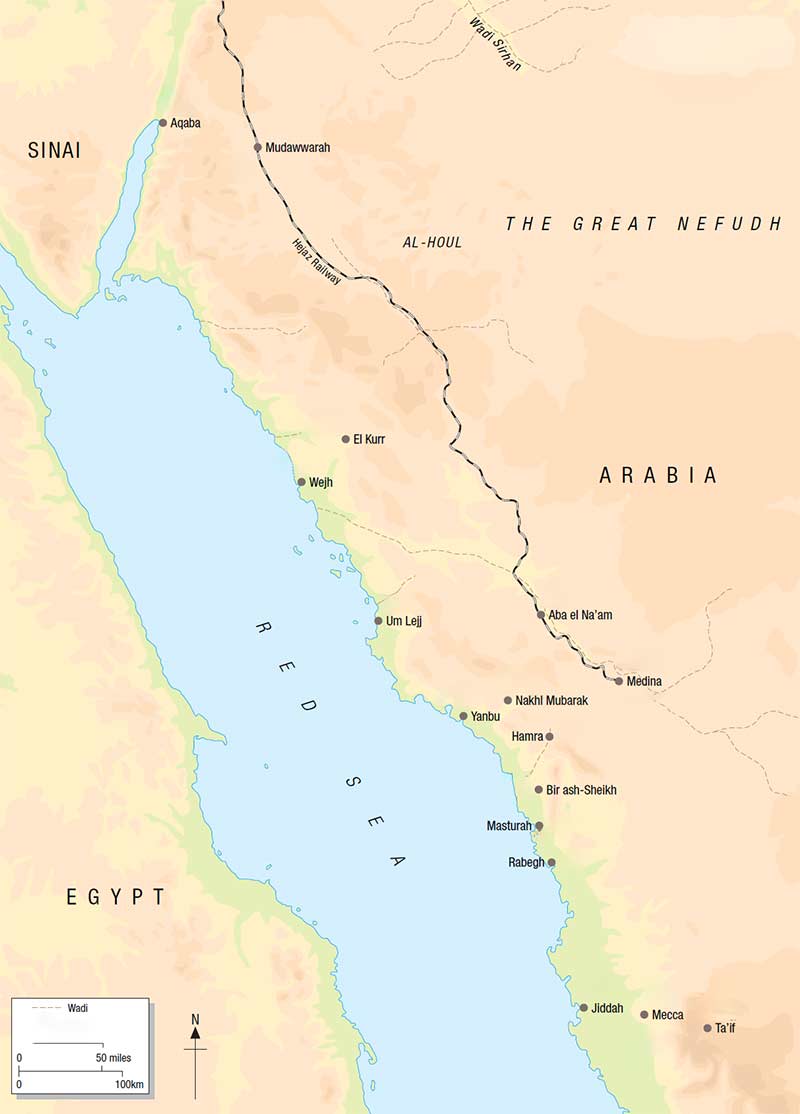
Further south in Arabia, there was also much discontent among the tribal peoples, and this focused on the perceived irreligious nature of the new Turkish Government and, in more practical terms, its taxation policies. Abdul Aziz ibn Saud, who was affiliated with the fanatical Wahabi sect, controlled central Arabia with his center of power at Najd. In 1914, however, he was isolated and far from sources of possible military aid. It must also be pointed out that several tribes remained fiercely loyal to the Ottoman Government. The most significant of these was the Shammar tribe, led by Ibn Rashid, which dominated north-central Arabia and had its power base at Ha’il.
Increasingly, the focus of the potential revolt came to the center of the Hejaz region of Arabia, which bordered the Red Sea and also included the holy cities of both Mecca and Medina. The Hashemite clan, direct descendants of the Prophet Muhammad who traditionally controlled the holy cities, ruled this region. The head of the clan, Sharif Hussein ibn Ali, became the focus of nationalist aspirations in the region. Before the war had even broken out, he had sent his second son, the Emir Abdullah ibn Hussein, on a secret mission to Cairo. While there, Abdullah met with Lord Kitchener, who was the commander-in-chief of Egypt.
Kitchener, who had much experience of Egypt and the wider Red Sea area, recognized the potential of a revolt in Arabia against the Ottoman Government and gave the scheme his tacit approval. His appointment as Minister of War in August 1914 effectively removed him from the Middle East theater of operations and perhaps denied the Arabs one of their greatest potential allies. After Britain’s formal declaration of war against Turkey in November 1914, Arab revolutionary plans gained a greater significance in British strategy. Throughout 1915, links were maintained with the Red Sea port towns of the Hejaz and both small arms and money were shipped to Arabia in aid of the Hashemite cause.
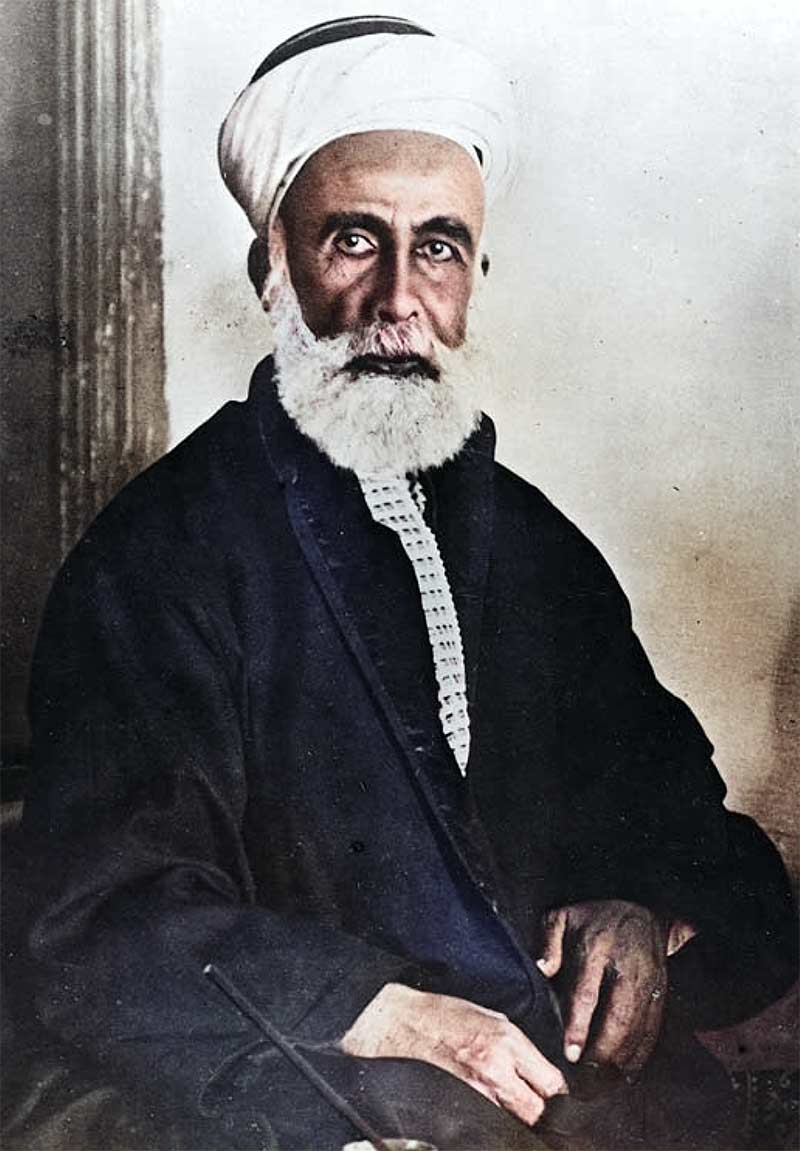
Although Britain had been sending military aid to the Hejaz throughout 1915, the outbreak of the revolt took the British staff in Cairo and the world by surprise. In the summer of 1916, the immediate revolt of Hashemite Arabs against Ottoman rule seemed unlikely. The fortunes of the main Allied powers were at a low ebb. On the Western Front, not only were both the main Allied armies bogged down but France was still enduring the continued German offensive at Verdun. Previous Allied efforts against the Ottomans had also not fared well. The Gallipoli operation had come to an inglorious end in January 1916 while Britain’s campaign in Mesopotamia was producing further humiliations, General Townshend having surrendered at Kut on 30 April. Throughout 1915 and 1916, Britain seemed paralysed along the Suez Canal and in Aden.
A series of short-term factors forced Sharif Hussein’s hand. It now seems certain that he was being pressured by Arab nationalists both from within his own camp and from as far away as Syria to take immediate action. Religious factors also played a part as Islamic leaders urged a holy war, or jihad, against the Ottomans who had entered an alliance with Germany and Austria-Hungary, both infidel nations. Hussein would also seem to have feared a crackdown against those who opposed the Ottoman administration in the Hejaz.
Given the recent execution of nationalist leaders in Damascus, he was probably in no doubt about what his own fate would be, and also that of his sons. His contacts in Constantinople informed him that Sharif Ali Haidar, leader of the rival Zaid branch of the Prophet Muhammad’s descendents, was being groomed by the Ottoman Government to replace him as emir of Mecca. For their part, the Ottoman command was not insensible to developments in the Hejaz and, since May 1916, had moved increasing numbers of troops to the region. For Hussein and the Hashemite cause, quick action became imperative, and, on 10 June 1916, the flag of revolt was raised at Mecca.
As the revolt was breaking out, T. E. Lawrence was a lowly lieutenant working for the Intelligence Department in Cairo. Regardless of his own sense of self-belief, he never imagined that the events of the next two years would place him in the public eye to such a degree as they did. By 1920, he would enjoy an international reputation, but in 1916, there seemed to be no potential for this situation to come about.
Chronology
1914
- AprilThe Emir Abdullah ibn Hussein, the son of Sharif Hussein of Mecca, travels to Cairo for secret negotiations with Lord Kitchener and the British military and political staff.
- 29 OctoberThe Ottoman Empire declares war on the Allied powers.
1915
Arms and money are shipped by the British across the Red Sea to the forces of Sharif Hussein of Mecca throughout the year, hoping to encourage a revolt against Ottoman rule. Early in the year, the Arab forces contact the revolutionary al-Fatat organization in Damascus.
1916
- January-JulyGeneral Sir Archibald Murray leads his army in a gradual advance through Sinai.
- FebruaryRepresentatives of the British and French governments (Sir Mark Sykes and M. Georges Picot) formulate an agreement for the division of Turkish territory following the defeat of the Ottoman Empire. This comes to be known as the ‘Sykes-Picot Agreement’. It envisages British control of Mesopotamia (Iraq), Palestine and Transjordan (Jordan) whilst France was to control Syria, Lebanon, and Turkish Cilicia. Russia was to receive the Armenian and Kurdish territories to the north-east of Ottoman territory.
- MayThe Ottoman Government tries to block the importation of military supplies into the Hejaz region of Arabia. An Ottoman army in Damascus is prepared to travel to Arabia in the event of rebellion. | The Allied powers ratify the secret Sykes-Picot Agreement.
- 5 JuneThe emirs Ali and Feisal announce the Arabs’ intention to withdraw from the Ottoman Empire to the Turkish commander at Medina, General Fakhri Pasha. After attacks on the railway and a failed assault on the town, the Arab forces are driven off.
- 10 JuneSharif Hussein of Mecca proclaims the revolt at Mecca; the Emir Abdullah attacks the Turkish garrison at Ta’if. Both towns finally fall into Arab hands some weeks later on Egyptian artillery.
- 16 JuneThe port of Jiddah is also captured, the Arab tribesmen being supported by the Royal Navy seaplane carrier HMS Ben-My-Chree.
- 30 JuneBritish military officers land at Jiddah, bringing mountain guns, machine guns, small arms and 1.2 million rounds of ammunition. They also bring food, money, and a party of artillerymen from the Egyptian Army.
- JulyThe port towns of Rabegh and Yanbu are captured by Arab forces.
- 9 JulyLast of Turkish garrison surrenders at Mecca.
- 1 SeptemberThe first members of the French Military Mission arrive in Alexandria in Egypt and soon afterwards are shipped to Arabia. | Hussein takes the title ‘King of the Arabs’. The British political staff later encouraged him to change this to ‘King of the Hejaz’.
- 22 SeptemberLast of the Turkish garrison surrenders at Ta’if.
- OctoberA British liaison party arrives at Jiddah. This party includes Lieutenant T. E. Lawrence.
- NovemberColonel Joyce moves to Rabegh, bringing weapons, supplies and a contingent of 450 Egyptian troops. He prepares to defend the town against a Turkish counterattack.
- DecemberLawrence is appointed as official adviser to the Emir Feisal. | A Turkish counteroffensive threatens both Rabegh and Yanbu but draws off because of Arab resistance and logistical difficulties.
1917
- 8-9 JanuaryBattle of Magruntein: Turkish troops defeated in Sinai by British forces.
- 17 JanuaryFakhri Pasha calls off counteroffensive against Rabegh and Yanbu.
- 23-24 JanuaryThe Red Sea port of Wejh is captured by Arab forces, supported by a Royal Navy landing party.
- FebruaryLieutenant H. Garland becomes the first Allied officer to mine a moving locomotive on the Hejaz Railway. Captain Raho of the French mission undertakes a raid on the railway with a small party of Bedouin.
- 26 MarchBritish defeated at First Battle of Gaza. On the same day, Lawrence leaves on a railway raid. This force of just under 400 men attacks the station at Aba el Na’am, north of Medina, on 30 March. Using a Krupp Mountain gun, the station and some rolling stock are damaged. A mine destroys a locomotive and around 30 Turkish troops are taken prisoner. The line is cut for three days. | Heavy fighting between Turkish forces and the Arab Southern Army near Medina.
- 17-19 AprilSecond Battle of Gaza. British attack was unsuccessful. Murray replaced by General Sir Edmund Allenby.
- 6 JulyAfter a two-month march through the desert, Lawrence and a force of Arab tribesmen to capture Aqaba. This strategic port is then used as the principal base of the Arab Northern Army in its later campaigns in Palestine and Syria.
- 6-16 JulyColonel Joyce, Colonel Newcombe and a party of Sharifian regulars embark on a series of highly successful railway raids to the north and south of al ’Ula and also on Sahl al Matran. On 6 July alone, they detonate over 500 charges on the line.
- 24-30 AugustCaptain Raho and a party of 40 French troops and 200 Bedouin carry out a raid on the railway line to the north of Mudurij, destroying five kilometers (3 miles) of track and four bridges.
- 26 September - 1 OctoberLawrence and Captain Pisani of the French mission embark on a railway raid with a party of around 80 Bedouin. On 6 October, they destroy a train and a bridge near Akabat el Hajazia.
- 12 OctoberColonel Joyce and a detachment of Sharifian regulars set off on a raid from Aqaba. They capture the ancient Crusader castle at Shawbak, which commands the road northwards into Palestine.
- 21 OctoberA large Turkish force is repelled by soldiers of the Arab Regular Army at Wadi Musa, near Petra.
- 31 OctoberThird Battle of Gaza. The British Army turns the Turkish flank at Beersheba. Lawrence leads a diversionary raid into Syria to wreck the vital railway bridge over the Yarmuk at Tell ash-Shehab. With a party of Arab tribesmen and Indian soldiers, Lawrence leads an abortive attack on this bridge during the night of 7-8 November.
- October - DecemberTurkish forces in Medina engage in a series of sweeps to the west to drive Arab forces away from the town.
- 2 NovemberIn a letter to Lord Rothschild, the British foreign secretary, Lord Balfour, announces his support for the establishment of a Jewish homeland in Palestine. This comes to be known as the ‘Balfour Declaration’.
- NovemberA train is ambushed north of al ’Ula and is found to be carrying a large quantity of gold and a conciliatory letter from the Ottoman Government to Sharif Hussein.
- 20 NovemberLawrence is captured, tortured, and raped at Deraa.
- 9 DecemberGeneral Allenby enters Jerusalem at the head of an Allied army. Lawrence is present at the official parade.
- DecemberColonel Joyce tries to explain the Sykes-Picot Agreement to Sharif Hussein in a positive light.
- 26 DecemberLawrence and Joyce embark on a long-range reconnaissance towards the railway station at Mudawwarah, using Rolls-Royce armored cars.
1918
- 1 JanuaryLawrence and Joyce use light artillery mounted on Talbot cars to attack Turkish posts north of Mudawwarah.
- 3 JanuaryA force of over 1,000 Arab tribesmen and regulars led by Sharif Nasir and Nuri as-Sa’id capture the strategic well at Abu al-Lissan. They then embark on a large raid towards Ma’an and attack the station at Jurf ad Darawish on their return.
- 25 JanuaryWith a party of around 600 tribesmen, Lawrence defeats a Turkish column of 1,000 men at Tafila, a town to the south-east of the Dead Sea. The Arab force captured over 200 prisoners and also mountain guns in what was the most significant Arab victory over conventional troops in the war. Lawrence was later awarded a DSO for his part in this action.
- MarchLieutenant-Colonel Alan Dawney replaces Joyce as head of Operation Hedgehog, owing to the latter being ill with pneumonia.
- 26-31 MarchGeneral Allenby leads an attack against Amman.
- 12 AprilNuri as-Sa’id, a former Ottoman officer now in Sharifian service, captures Ghadir el Haj using a party of the Arab regular army and a battery of 65mm guns supplied by the French.
- 13 AprilMaulud Bey occupies Jabal Simnah, to the west of Ma’an, using regular Sharifian troops. Further assaults on Ma’an during the days that follow.
- 17 AprilA contingent of the Arab Regular Army and Arab tribesmen begins a final major assault on Ma’an. The town does not fall, but the railway line south of Ma’an is cut and is not repaired for the rest of the war. A lengthy siege then ensues.
- 30 April - 3 MayGeneral Allenby leads a second attack on Amman.
- MayA series of raids takes place against the Hejaz Railway and 25 bridges are destroyed. This is part of a wider campaign to support General Allenby’s operations.
- 4 JuneThe Emir Feisal and Chaim Weizmann, the Zionist leader, meet at Waheida to discuss the future of Palestine and Arab claims to nationhood. Colonel Joyce acts as interpreter and later reports that both men were non- committal but positive.
- 8 AugustA force of over 300 men of the Imperial Camel Corps commanded by Major Buxton and T. E. Lawrence attack and capture the railway station at Mudawwarah. RAF planes assist them in this.
- 16 September - 1 OctoberThe Arab Northern Army under Feisal begins a new campaign in cooperation with Allenby’s planned Megiddo offensive. A contingent of around 1,000 men, including 450 Arab regulars, Gurkhas, Egyptian troops, and French artillery, carry out a series of raids on the line to the north and south of Deraa.
- 19 SeptemberAllenby’s Megiddo offensive begins. Arab attacks in and around Deraa continue to thwart Turkish attempts to repair the line. Despite being harassed by bombing raids from German and Turkish aircraft, the Arab Army continues to destroy bridges on the lines north and south of Deraa, which are crucial to the Turks, while the main British offensive develops.
- 23 SeptemberThe Turkish garrison at Ma’an vacates the town, having been under siege since April, and surrenders to British forces on 28 September.
- 27 SeptemberA Turkish force destroys the village of Tafas and kills most of its inhabitants in an act of reprisal. This Turkish force is later destroyed by elements of the Arab Army under Nuri as-Sa’id and Lawrence, aided by Pisani and his artillery. While accounts of this incident vary, few Turkish prisoners are taken.
- 28 SeptemberThe British 4th Cavalry Division, under General Barrow and an advance party of the Arab army, arrive in Deraa at the same time. Barrow finds tribesmen killing the wounded on a Turkish hospital train in the station.
- 1 OctoberLeading elements of the Arab Army, the 5th Cavalry Division and the Australian Mounted Division enter Damascus. Thereafter, the Arab Army continues to parallel the British advance northwards.
- 26 OctoberWhen the British Army enters Aleppo, it finds an Arab force already there.
- 29 OctoberBritish and regular troops of the Arab Army arrive at Muslimiya Junction, north of Aleppo. This crucial railway junction controls the Turkish rail link to the Mesopotamian front.
- 31 OctoberThe Ottoman Empire is granted an armistice, ending the war in the Middle East.
1919
- JanuaryHaving held out for another two months, Fakhri Pasha, the Ottoman commander of Medina, finally surrenders.
- JulyLawrence and Pisani accompany Feisal to the Paris Peace Conference. In July 1919, Feisal is forced to leave Syria on the orders of the new French administration.
1921
A Middle East settlement is arrived at during the Cairo Conference. Under the terms of the British mandate, Feisal is to become king of Iraq (formerly Mesopotamia) in 1921 while his brother, Abdullah ibn Hussein, becomes king of Transjordan in 1923.
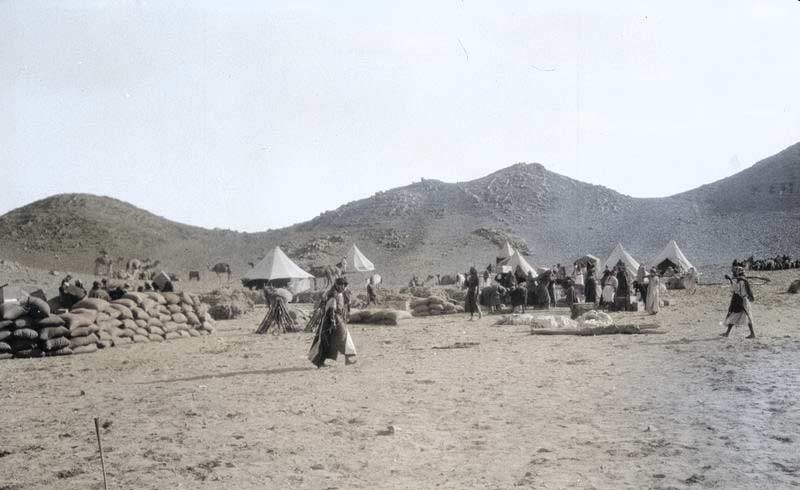
Orders of the Battles
The Arab Army 1916-1918
The original Arab force that instigated the revolt between 5 and 10 June 1916 comprised up to 30,000 Arab tribesmen who rose in revolt at Medina and Mecca.
Late 1916
9,000 men under the Emir Ali, located south of Medina, 8,000 men under the Emir Feisal, encamped near Yanbu 1,500 Egyptian troops and irregulars sent by the British
The Arab Northern Army, 1917-1918
Commander: The Emir Feisal ibn Hussein
Deputy Commander: The Emir Zeid ibn Hussein
- The Regular Sharifian Army (around 2,000 men)
- Commander: Jafar Pasha al-Askari
- Chief of staff: Nuri as-Sa’id
- 1st Division (Aqaba) - Brig. Gen. Amin al-Asil
- Hashemite Infantry Brigade (two battalions of around 400 men each)
- 2nd Division (Quwayra) - Lt. Col. Majid Hasun Hashemite Infantry Brigade (800 men)
- An artillery contingent of eight guns crewed by 150 men and commanded by Rasim Sardast
- A machine-gun detachment, commanded by Abdullah Al-Dulaimi
- A battalion of the Hejaz Camel Corps, commanded by Khalid Sa‘id
- Mule-mounted infantry originally commanded by Maulud al-Mukhlis
- Associated logistical and medical units
The Irregular Army/Tribal Forces
Around 6,000 tribesmen from various tribes, including the Howeitat, the Bani ’Ali, the Bali, the Juhaynah, the Utaybah, among others. Commanded by their own tribal chiefs, including Auda abu Tayi, Sharif Nasir ibn Ali, Sharif Ali ibn Arayd and Sharif Mastur, among others.
The Arab Southern Army, 1916-1918
Based at Rabegh and commanded by the Emir Ali ibn Hussein, this force opposed the Turkish forces at Medina. It comprised:
- 2 x infantry battalions
- 1 x battalion mule-mounted infantry
- 1 x battalion of camel-mounted infantry 4 x artillery batteries
- 1 x engineer company
- A contingent of tribal forces
The Arab Eastern Army, 1916-1918
This army was commanded by the Emir Abdullah ibn Hussein and it operated against the pro-Ottoman Shammar tribe. It comprised:
- 2 x battalions of camel-mounted infantry 1 x cavalry squadron
- 1 x battery of mountain artillery
- A contingent of Hashemite volunteers A contingent of tribal irregular forces
Operation Hedgehog: British Military Mission to the Arab Northern Army, 1916-1918
Colonel P. C. Joyce commanding until March 1918. From March 1918, Colonel Alan Dawney. This force included Stokes mortar and machine-gun crews attached from the British and Indian Armies. There were also Egyptian troops, Gurkhas and a labor corps. In 1918, a company of over 300 men of the Imperial Camel Corps was also attached. The force also contained:
- The Hejaz Armored Car Company, comprising Rolls-Royce armored cars
- The Hejaz Talbot Car Battery, comprising Talbot cars, some of which were mounted with 10-pounder guns
Air support:
From 1916, RFC/RAF planes were attached to this force as support. These initially comprised 4 x BE2 aircraft. In 1918 they also included Bristol F2 Fighters.
French military mission to the Hejaz, 1916-1918
Commanded by Colonel Edouard Brémond until December 1917, In October 1916, the French contingent included:
- 8 x Hotchkiss MG sections
- 1 x battery mountain guns (six guns) 1 x battery of field artillery (six guns) 1 x engineer company
- 1 x support company
The French strength in March 1917 stood at 47 officers and 1,127 men based at Port Said, most troops being drawn from units from French North Africa. There were also small detachments at Mecca and Rabegh. The French force also contained a Régiment mixte de marche de Cavalerie, drawn from various cavalry regiments including the Algerian Spahi.
Ottoman Forces in the Hejaz 1916-1918
The Ottoman Army in Arabia was composed of troops from the Fourth Army.
- Fourth Army - General Mehmed Cemal Pasha (Büyük) - 23,000 men
- Chief of staff: Colonel Ali Faut Bey.
- VIII Corps - General Mehmed Cemal Pasha (Mersinli) 8th Infantry Division
- 10th Infantry Division
- 23rd Infantry Division 25th Infantry Division 27th Infantry Division
Jiddah
Cidde Mufrezesi, June 1916
- General Staff Major Huseyin Husn
- 1/128th Infantry Battalion
- 2/128th Infantry Battalion
- 1 x machine-gun company (four machine guns)
- 1 x mountain artillery battery (four guns)
Mecca
Mekke Kumandanl, June 1916
- Major Ziya (captured on 11 June 1916)
- General Staff Major Dervi (the chief of staff of the 22nd Infantry Division, took over the command following Ziva’s capture)
- 3/128th Infantry Battalion
- 2/130th Infantry Battalion
- 1 x infantry company, recruited locally from among former Sudanese slaves
- 2 x mountain artillery batteries (seven to eight guns)
- Detachment gendarmerie
- Support company
Ta’if
June 1916
- General Ghalib, military governor and commanding officer of the 22nd Infantry Division
- Local military commander, Ahmad Bey of Mehmed Bey
- Divisional staff and HQ elements
- 1/129th Infantry Battalion
- 3/129th Infantry Battalion
- Gendarmerie battalion
- 2 x mountain gun batteries
- Support elements (medical, logistical)
Railway protection army group based at Ma’an
1st Kuvve-i Mürettebe, late 1916. The title of this unit translates literally as ‘provisional force’ It was administered by an army corps level HQ under the command of General Mehmed Cemal Pasha (Küçük or Üçüncü). This unit was founded to provide security for the Hejaz Railway at the end of 1916. The HQ moved to El-Ala on 16 February 1917 but returned to Ma’an on 24 September 1917. In 1917, the 2nd Kuvve-i Mürettebe was formed and based at Tabuk.
- 138th Infantry Regiment
- 161st Infantry Regiment
- 1/79th Infantry Battalion
- One battery from the 6th Field Artillery Battalion
- 3 x cavalry squadrons
- Ma’an Gendarmerie Battalion
- 2 x infantry companies (from 31st Infantry Regiment and 130th Infantry Regiment)
- 2 x railway companies
- Circassian Volunteer Cavalry Regiment
- Logistical and medical support elements
- Units later attached to railway protection included the 23rd, 42nd 162nd and 178th infantry regiments
Hicaz Kuvve-i Seferiyesi
The title of this command organization translates literally as ‘the expeditionary force of the Hejaz’. Its HQ was in Medina. It was administered by a field army level HQ and was under the command of General Fakhreddin (Fakhri) Pasha. It arrived at this theater of operations on 31 May 1916 and the chief of staff was Lt. Col. Emin.
- Hecins var Regiment (camel corps)
- 1st Aknc Regiment (volunteer Arab cavalry)
- 3 x field artillery batteries
- 2 x signal companies
- Medical and logistical support elements
Medina Fortress Command
This unit was commanded by General Basri Pasha, with Lt. Col. Galib as second in command.
- 2nd Aknc Regiment
- 4/131st Infantry Battalion
- 2/129th Infantry Battalion
- Gendarmerie Battalion
- 1 x railway battalion
- 2 x artillery batteries
58th Infantry Division
This division was founded on 28 October 1916 and was under the command of Lt. Col. Ali Necib. The chief of staff was Major Yusuf Ziya.
- 42nd Infantry Regiment
- 55th Infantry Regiment, commanded by Abderhaman Bey
- 130th Infantry Regiment
- Esters var Battalion (mule-mounted infantry battalion)
- 1 x mountain artillery battery
Coastal garrisons
Aqaba 1916: 2 x companies gendarmerie
- Aqaba 1917: elements of the 161st Infantry Regiment
- Wejh 1916: elements of the 129th Infantry Regiment
- Yanbu 1916: elements of the 45th and 129th Infantry Regiment
- Southern Arabia/Yemen: VII Corps, comprising the 21st, 22nd, 39th and 40th Infantry Divisions
Air Support
Following the outbreak of the revolt, 3 x Pfalz AII of the Ottoman Air Force were shipped to the Hejaz. These were later supplemented with further Ottoman and German planes.
Read the next part:
- {{#owner}}
- {{#url}} {{#avatarSrc}}
{{name}} {{/url}} {{^url}} {{#avatar}} {{& avatar}} {{/avatar}} {{name}} {{/url}} - {{/owner}} {{#created}}
- {{created}} {{/created}}


